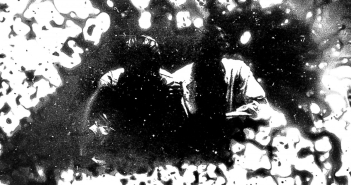Night Walking Deserves a Quiet Night
I’ve always walked alone in the city after dark. Recently, it’s with my dog, along the banks of the Royal Canal. Of a winter evening, the path is quieter than during the day, when bikes and scooters fly by, and the dog’s senses are lit up by the city wildlife revealed in the still of night.
Last week, as we strolled along a quiet stretch, a man entered the canal path from the road and began walking towards us. Something wasn’t right about him.
For so many women, there is an understanding, so quietly absorbed that we don’t even give it much thought, that there are risks attached to walking alone at night: of physical violence, of sexual violence, of harassment. It’s the water in which women swim. It’s the reason why our male loved ones show concern for us over their male counterparts when out walking alone – because we all know there are greater risks to it by virtue of being a woman.
I saw a post on social media, in the aftermath of the recent shocking murder of Ashling Murphy. It was by a male journalist who decried the blaming by women of men ‘en masse’ for individual atrocities by men against women.
The ‘not all men’ mantra seems to me as dull-minded as it is deflective, for whoever made the claim that it was?
The perpetrator is the person to blame. What is being called to account in women decrying male violence against women is a culture that means all women, including female children, swim in the waters of often unconscious fear when facing the public world of men, from a young age.
In this world, we know what it is to go from feeling safe to on edge in the blink of an eye, from puberty on, if not before – when we flinch in the face of that first catcall, or unsolicited approach on the street. Ani DiFranco sings of it in her resonant song ‘The Story’:
I would’ve returned your greeting
if it weren’t for the way you were looking at me.
Only men can change that.
It doesn’t make all men to blame; but it does make them potential agents of change for the better.
The man who began walking towards me last week was young and, as I said, something wasn’t right about him. His behaviour was heightened, edgy. Maybe he was high. He shouted greetings at the dog, but it didn’t sound friendly. My adrenaline kicked in. I furtively glanced behind to see if I was alone. I was.
I braced myself for his approach. It wasn’t that I thought the worst, it was that I knew that whatever came to pass on this canal path with nowhere to escape to, I was to a fair degree at his mercy. I gripped my key between my fingers – that reflexive move women make even if only to feel safer.
The whole thing probably unfolded in less than thirty seconds but it felt longer. He knew that I was the vulnerable one and I sensed his knowledge as he approached. He came closer than he needed to. ‘How are you, love?’ Spoken loudly, into my face. We both knew it wasn’t a genuine question.
I answered as friendly-casual as I could. Not too nice, not too nonchalant. Definitely no hint of aggression. In my voice I was trying to impart lots of things. I’m relaxed. I don’t see you as a threat. I’m friendly (whatever the nature of your problem is, I don’t judge you). That wasn’t true. I did judge him – for getting his kicks from being able to be scary towards a lone woman just by virtue of being a man. Any soothing note my tone might have imparted was tactical.
After he passed, I slow-counted to twenty. I was afraid to turn around too soon in case it gave him cause to return. I glanced over my shoulder, then exhaled slowly, relieved to see he had continued on this path – and I was nearing the road.
Perhaps the most remarkable thing is that I don’t think I’d even have committed the incident to memory, let alone mentioned it to anyone, if I hadn’t returned home to the devastating news that a young woman had been murdered while out jogging on a Tullamore canal path. Ashling Murphy was a beautiful, talented, generous spirit, with her life in front of her. But this is the water in which women swim, the air in which we walk, or run – where risks, conscious and unconscious, sometimes, brutally, come to pass.
The particular attributes of her murder – that it took place in broad daylight, that it looks to have been an attack by a stranger– make it ripe for description as a tipping-point event, and the outpouring of grief and anger in its wake suggest this may be so. Time will tell.
For while the cold threat of such an attack may strike the greatest fear into most women, the reality remains that for victims of male violence, the perpetrator is rarely a stranger.
Per the Women’s Aid Annual Impact Report 2020, since 1996, 236 women have died violently in the Republic of Ireland. 61% were killed in their own homes; 55% were killed by a partner or ex (of the resolved cases) and almost nine in ten knew their killer.
And while domestic and gender-based violence prevails across social class, often its victims face higher rates of social inequity, including homelessness – in a European study some 92% of homeless women had experienced violence or abuse throughout their lives.
For society at large, the issue of gender-based violence is one that remains behind closed doors, dealt with within the confines of the private rather than public domain. Charities that support victims of gender-based violence consistently struggle from underfunding, and consecutive governments have treated the issue as one of low priority.
Lockdowns have been shown to create the most serious impacts for the socially disadvantaged, so it is no surprise that the 2020 Women’s Aid report reveals a startling 43% increase in contacts with their services, compared to 2019. The Covid-19 pandemic and its measures have had an ‘unprecedented and exhausting impact’ on victims of abuse. Surely this and other social inequities of lockdowns must be given consideration as Covid-19 policy shapes itself towards the future.
As the government quickens pace to steer through its new strategy on domestic and gender-based violence, due to be published in March – its stated goal being a zero-tolerance approach – time will tell what it delivers on a structural level, and we can only hope that it signals meaningful change.
Whatever comes to pass, it remains the case that on a societal level, all men do have a role in changing the waters within which women swim, along with the air within which we walk, run, and carry out our lives – private and public. And owning that fact may be what separates the men from the boys.




